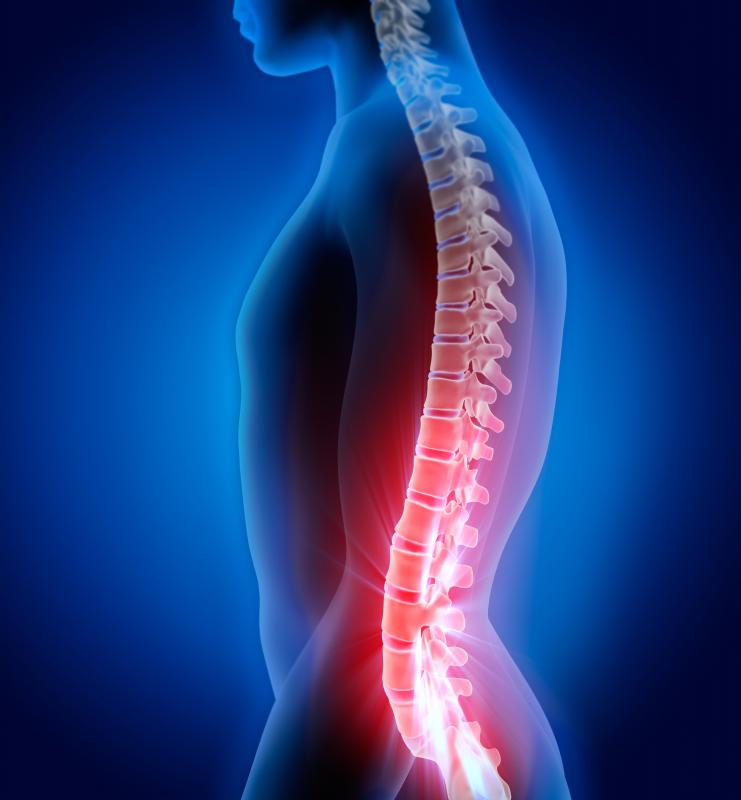At TheHealthBoard, we're committed to delivering accurate, trustworthy information. Our expert-authored content is rigorously fact-checked and sourced from credible authorities. Discover how we uphold the highest standards in providing you with reliable knowledge.
What is the Spine?
The spine, alternately known as the vertebral column or backbone, is the structure that encloses and protects the spinal cord, which is the bundle of nerves that transmits signals from the brain to the rest of the body. It consists of a stack of bones — 33 vertebrae, the sacrum, and the coccyx — and the intervertebral discs separating the bones. The spine is subdivided into regions known as the cervical, thoracic, and lumbar, with the pelvic region containing the sacrum and coccyx considered a separate entity.
These regions are distinguished from one another according to several characteristics. One is where the curve of the backbone changes directions: The cervical spine curves outward, the thoracic curves inward, and the lumbar curves outward again. Another is the presence of the ribcage; the thoracic region is where the ribs attach to individual vertebrae. A third characteristic is whether the vertebrae can move relative to one another. The sacrum and coccyx, for instance, are actually both made up of several fused vertebrae, fused in that they are missing the intervertebral discs that absorb shock, hold the vertebrae together, and allow the vertebrae to move relative to one another.

In the cervical spine, identified as C1-C7, are seven vertebrae, the lower five of which are movable. The upper two, C1 and C2, are largely responsible for supporting the head — C1 is known as the atlas bone as a nod to the figure in Greek mythology who carried the weight of the world on his shoulders. Found mostly in the neck, the cervical vertebrae are the smallest individual vertebral bones. Several muscle groups and their corresponding ligaments attach to this section of the vertebral column, including the large trapezius, a muscle that shrugs the shoulders.

The 12 thoracic vertebrae are referred to as T1-T12 and are located in the upper back. Their most distinguishing characteristic is the presence of what are known as costal facets, which are the surfaces on each vertebra where ribs attach. Relative to the cervical vertebrae, the thoracic vertebrae are slightly larger and absorb slightly more weight. They also serve as a site of attachment for more muscles than the cervical vertebrae, including the trapezius, but also the rhomboids and the latissimus dorsi, the largest of the back muscles.

While there are only five vertebrae in the lumbar spine, these are the largest, absorbing much of the weight from the torso above them. They begin where the ribcage ends and as such have no costal facets. Easily vulnerable to injury, the lumbar vertebrae are surrounded by soft tissue only and are exposed not only to compression forces, but to forces acting on the body from several different directions. This is one reason why it is advised to strengthen the core muscles surrounding the lumbar region, particularly in individuals performing frequent and/or heavy lifting motions.

Finally, the base of the vertebral column is where the sacrum and coccyx are found. The sacrum consists of five fused vertebrae and is situated beneath the lumbar spine between the two hipbones, holding them together. Alternately known as the tailbone, the coccyx consists of four fused vertebrae, which like those of the sacrum grow consecutively smaller in shape as the backbone descends. The coccyx does not serve much of a function other than to act as a site of attachment for many muscles of the pelvic floor, although it does allow humans to balance in a sitting position while leaning backward.
AS FEATURED ON:
AS FEATURED ON:

















Discuss this Article
Post your comments